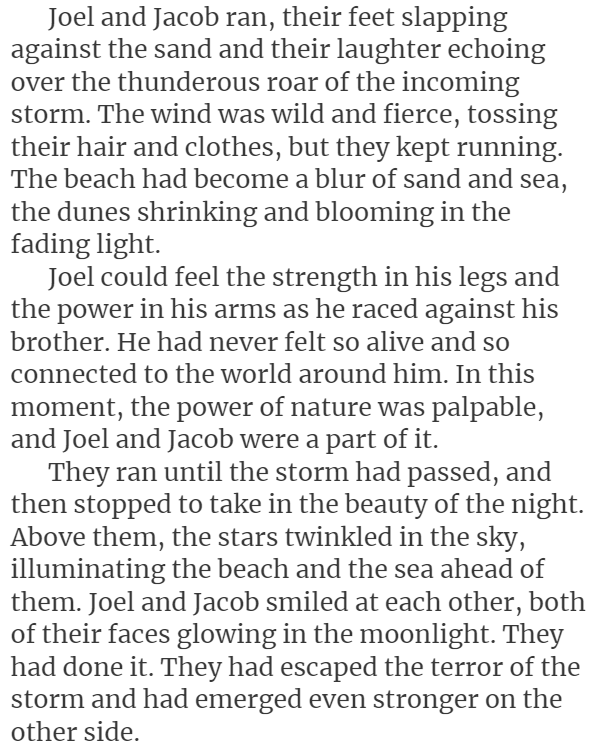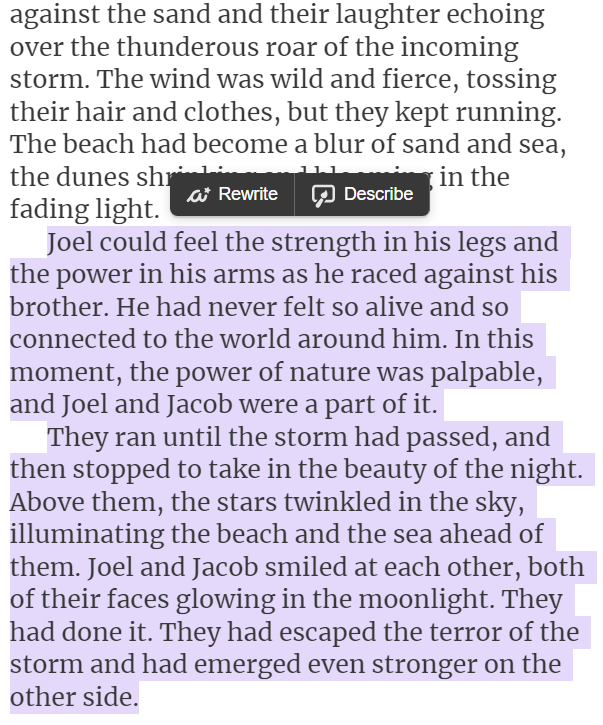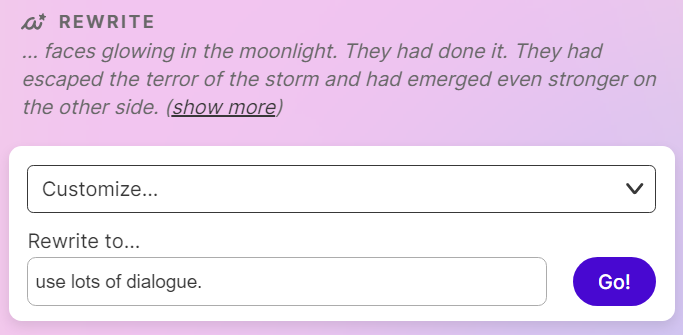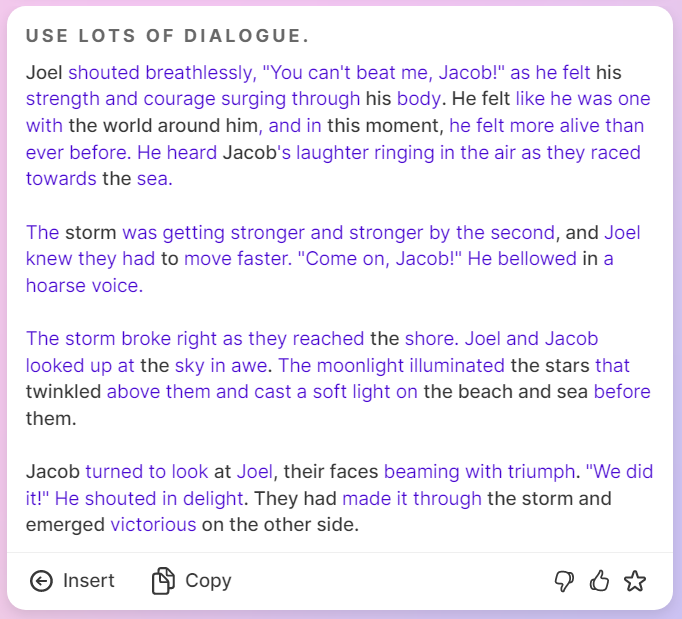Instant Dialogue for Description-heavy Writers
Some writers are description heavy because they want to paint a vivid picture for the reader. They use descriptive language to create an atmosphere and bring the story to life. It can also emphasize certain details or emotions that are important to the plot. Description helps readers visualize and connect with the characters and setting meaningfully.
The type of writer above?
Yep, that's not me.
I am dialog heavy all the way. The Describe and Rewrite button (with its More Descriptive option) are the shiny handles on my artificial intelligence writer's help crutch—which is probably why I'm bringing you another tip from Sudowrite user Federico Escobar.
Federico shared he found a great way to turn a dialogue-less, description-heavy piece into a dialogue-heavy piece using Rewrite.
I'll start with a quick two-sentence sketch of a scene.
Joel and Jacob ran down the beach, the thunder crashing all around them. The wind whipped through their hair.
Then highlight it, and hit Expand to get what I bet will be pretty description-heavy prose.

Yep. What did I tell you?
Not a single quotation in sight.
Not to worry. We're going to change that by highlighting the second and third paragraphs:

Then we'll click on Rewrite and choose the option to Customize.
In Rewrite to we'll tell Sudowrite to use lots of dialogue.

Then we'll click Go!

Rewrite returns the writing with conversations incorporated and appropriate to the scene we started with.
Mixing description and dialogue in fiction helps create a vivid picture of the setting and characters for the reader. While description can give readers clues about what's going on in the story, dialogue reveals how characters interact with each other. Using both helps to draw readers into the story and make them feel like they're part of the action.